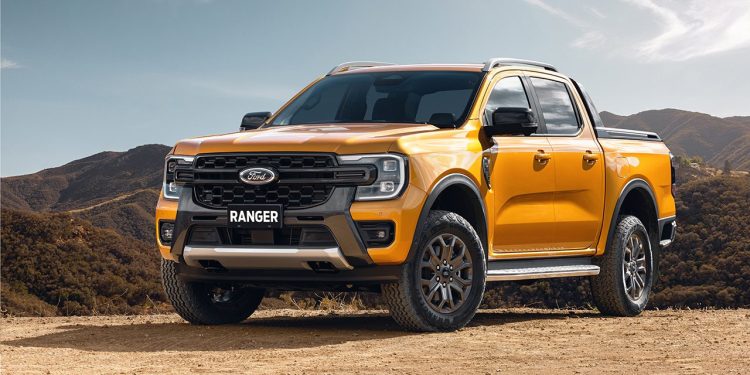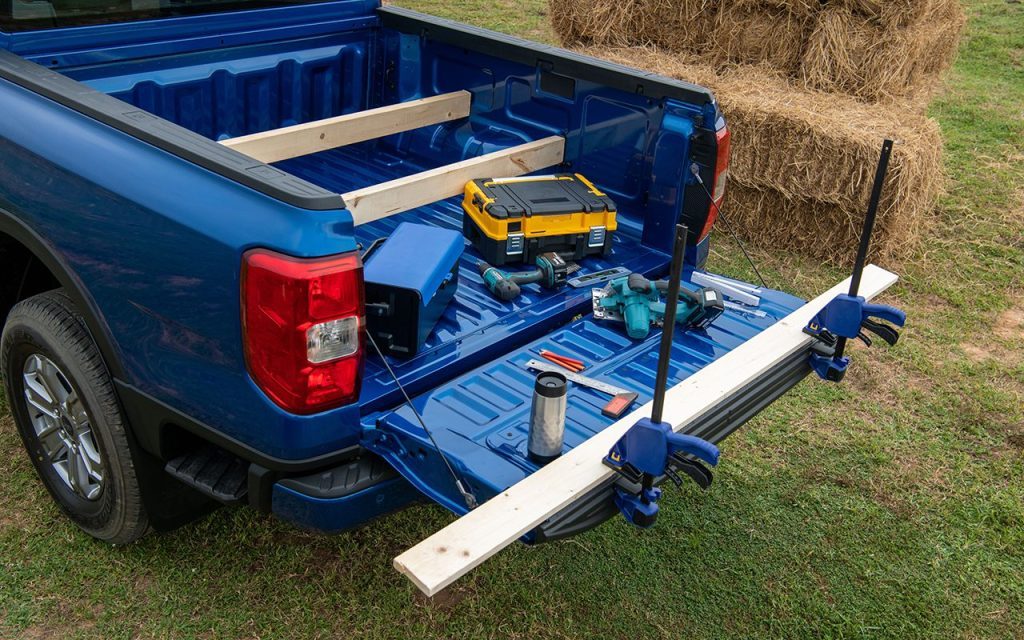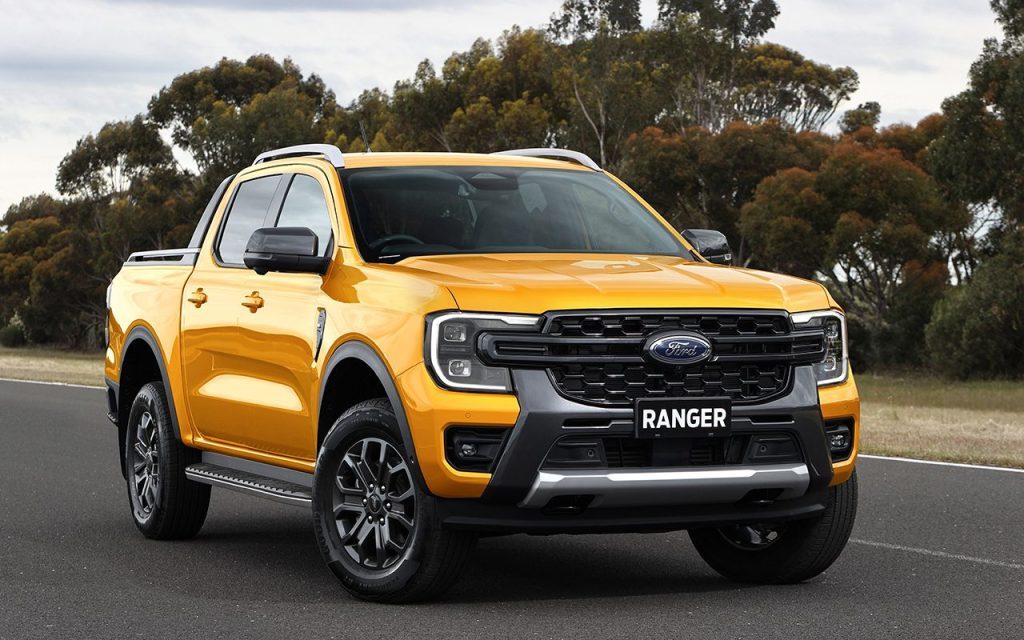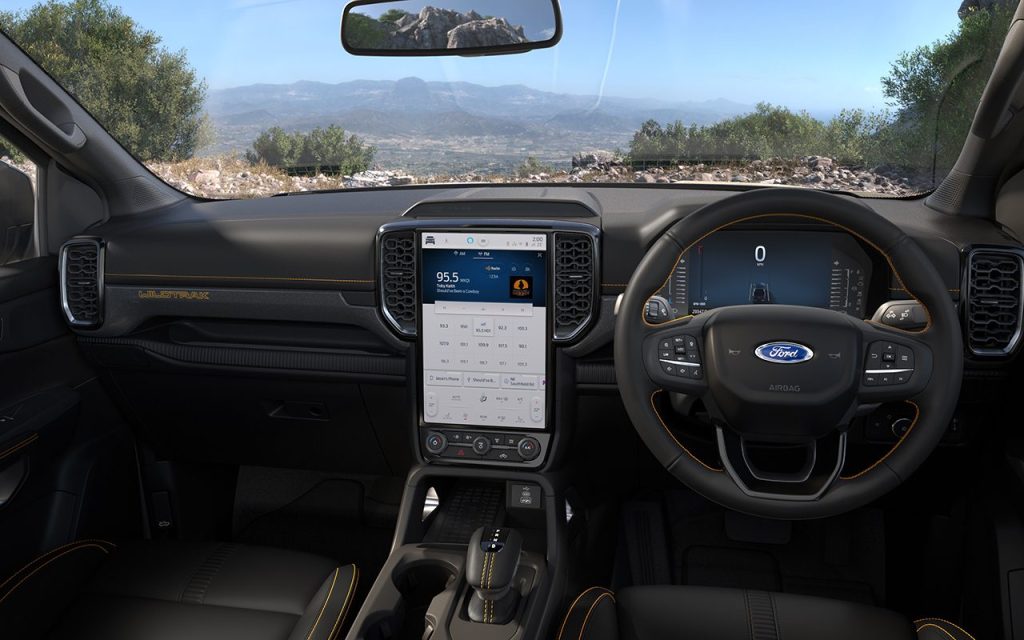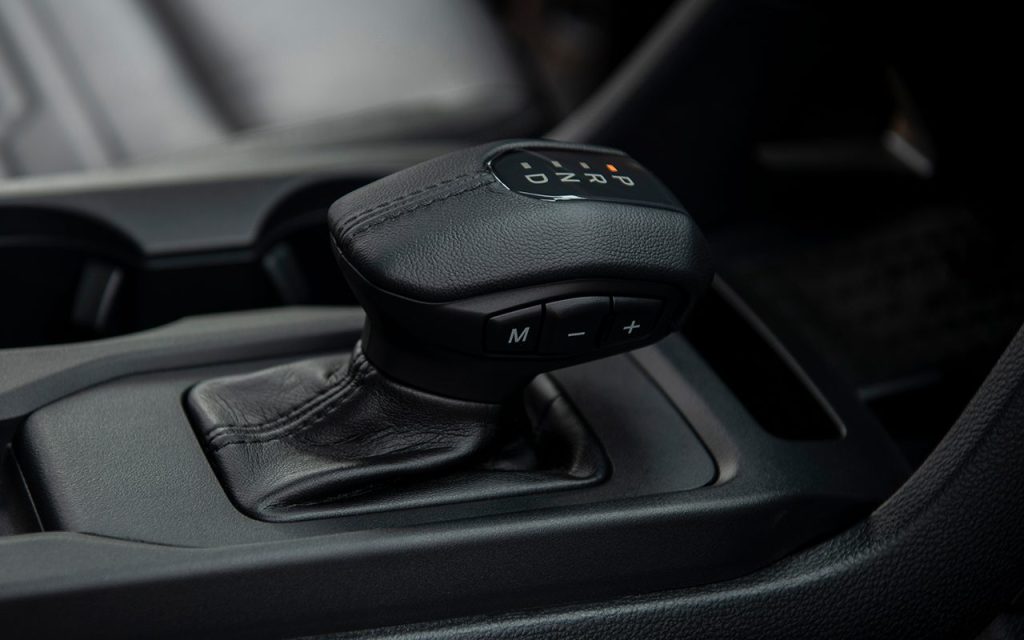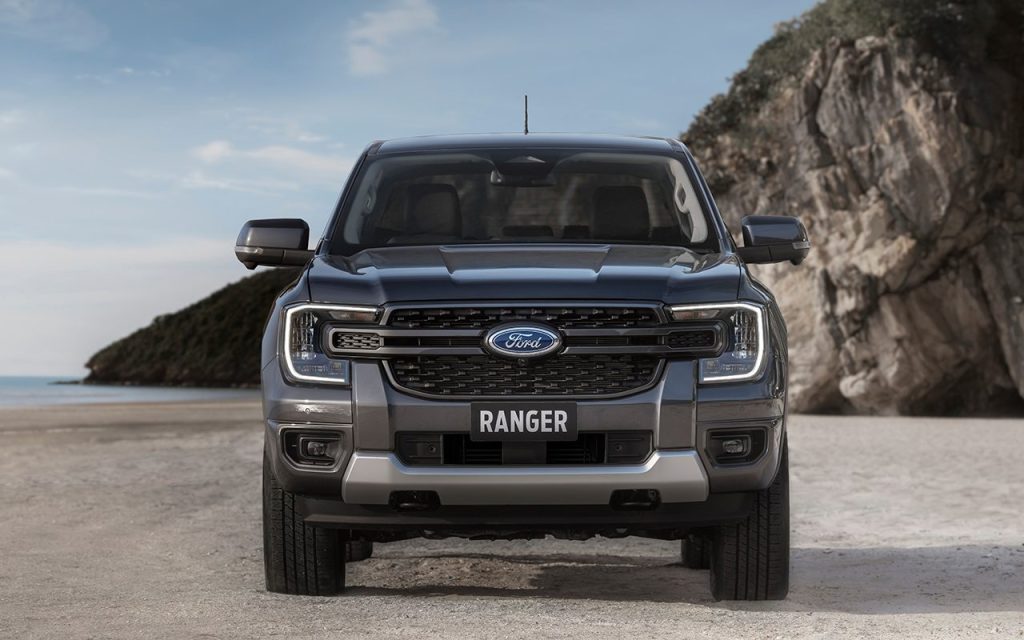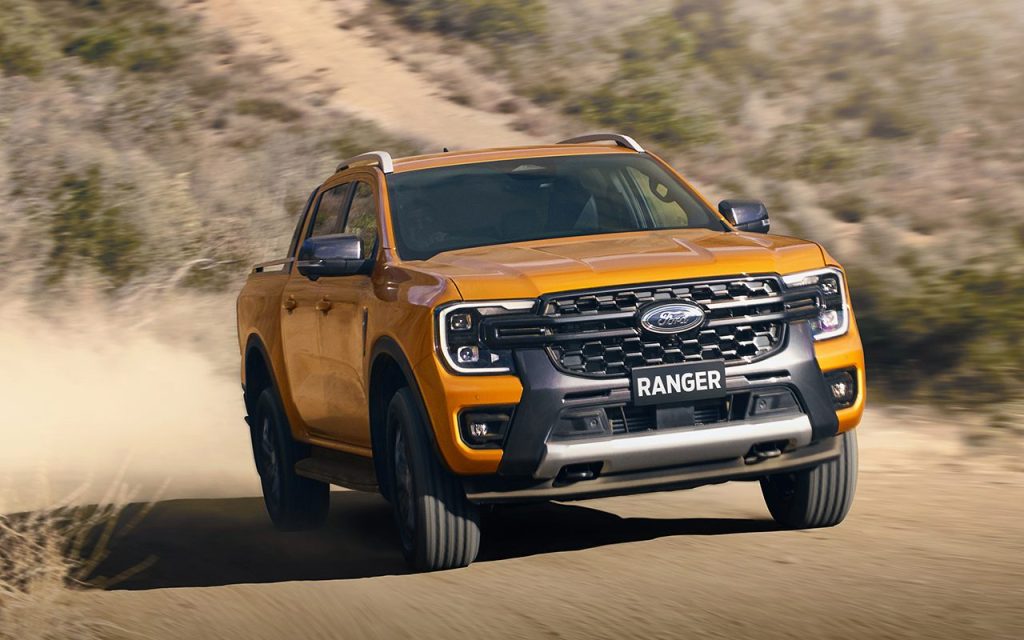New Ford Ranger revealed, 3.0-litre V6 and hybrid on the way
Words: Matthew Hansen
Following months and months of teasers, Ford has finally lifted the covers off the new Ranger while also detailing its powertrains, features, and more.
As speculated looking at the leaked and teased imagery, the new Ranger’s design language leans heavily on the model’s American cousins; the Maverick and the F-150. Ford describes this as “its global truck design DNA”.
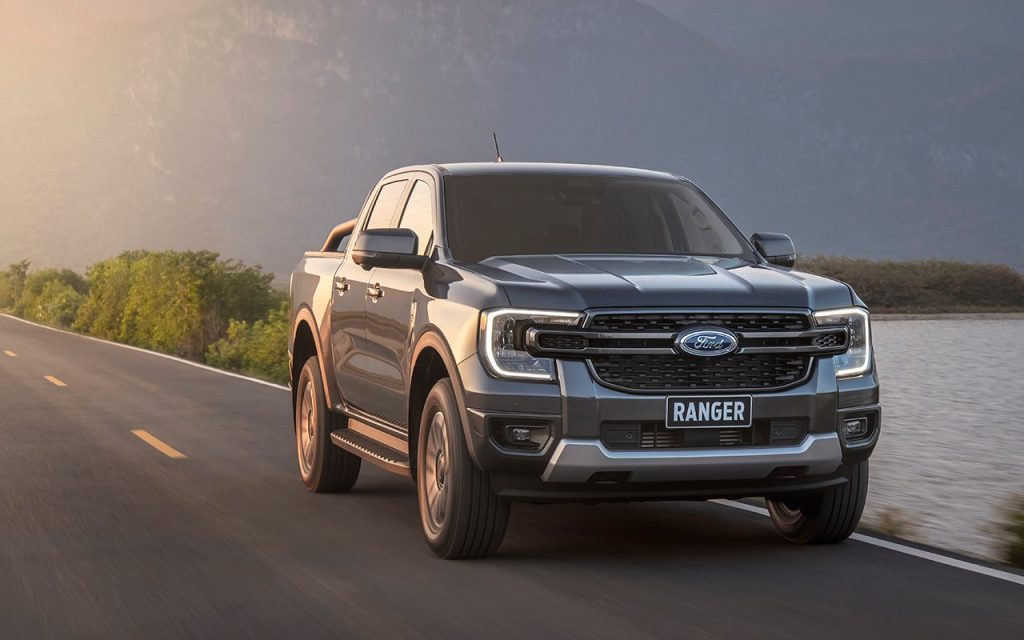
As such the model gets a more squared-off profile front and rear. The front in particular, with its more prominent grille and C-clamp daytime running lights borrows plenty from the Maverick … not that that’s a bad thing.
The Americanisation of the Ranger’s exterior appearance doesn’t end with the grille. The model also gets more handy little touches scattered here and there. These include the integrated box side step (a recess in the flanks of the rear bumper that makes it easier to reach into the bed) and a tailgate that’s designed to function as a workbench when folded flat.
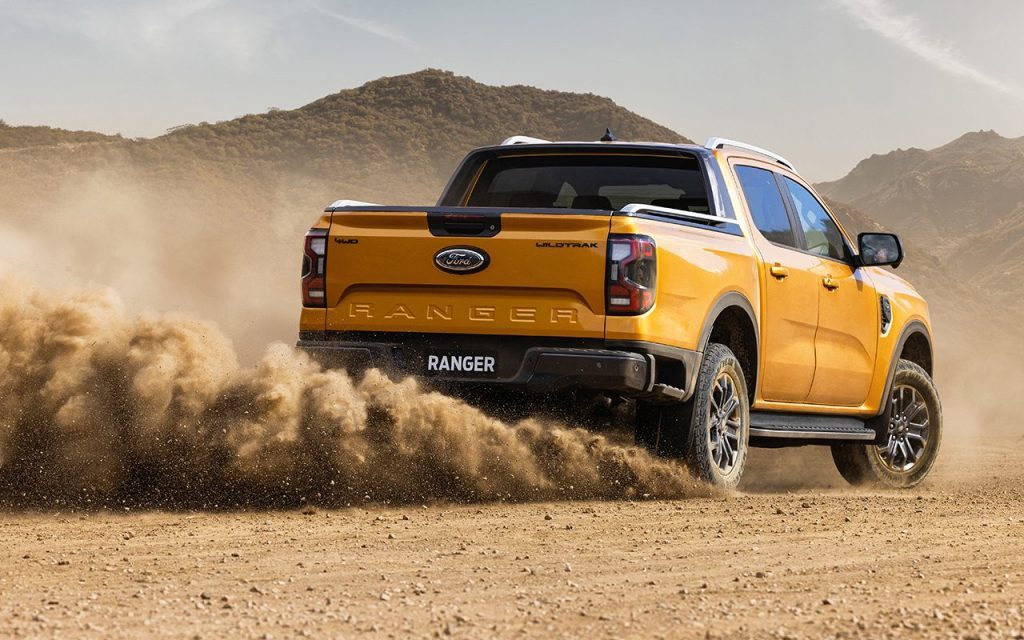
Ford has issued images of the Ranger in three different trim levels; Sport, XLT, and Wildtrak. Those waiting to see the model in its most bare-bones trims and in its flagship show-jumping Raptor guise will have to wait.
The visual differences between the three models on the outside follow a familiar path. The Sport is the most no-frills of the group, with a body-coloured front bumper, a silver bash plate, and a subtle charcoal-coloured grille. The XLT gets a chrome grille insert, and a body-coloured bash plate. And finally the Wildtrak gets a more bold honeycomb grille, a grey trim insert that merges the bash plate and grille into one unit, and different wheels.
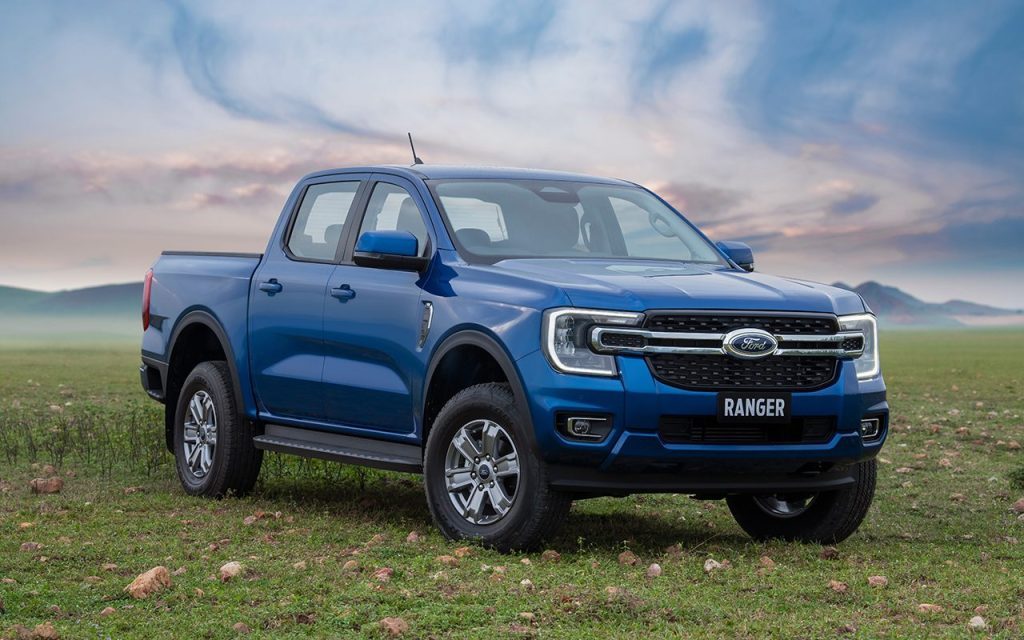
Apart from what’s likely to be the most advanced interior space of any ute in class (we’ll get to that soon), the biggest news is engines. Ford has announced three powertrains for the Ranger; a single-turbo 2.0-litre diesel, a familiar bi-turbo 2.0-litre diesel, and a 3.0-litre V6 turbodiesel. This isn’t an Amarok carryover (the two will share the same platform in their next-gen models) but an update of Ford’s F-Series Power Stroke six.
Ford hasn’t confirmed power or torque outputs of any of these powertrains, although it’s been rumoured that the 3.0-litre V6 in the Wildtrak will produce around 190kW of power and 600Nm of torque. According to reports, a twin-turbo version of the same six-cylinder is likely to reside in the Raptor.
Ford’s press material makes no reference to a manual transmission, with analogue shifting most likely wiped from the model range. It’s not confirmed which automatic the company will utilise, but it’s likely to be a version of the 10-speed automatic currently featured in its 2.0-litre bi-turbo models.
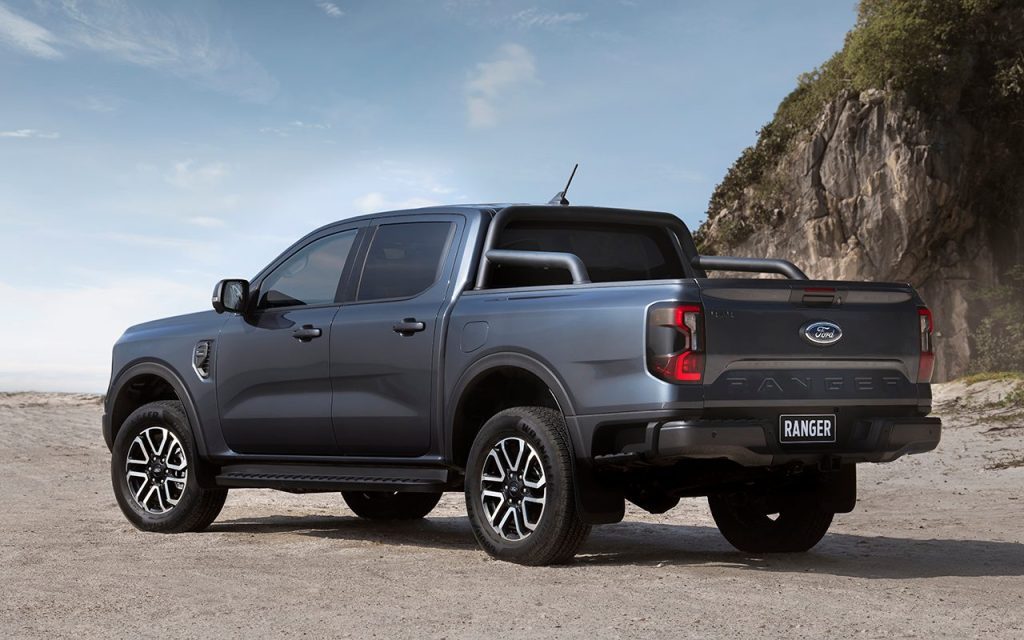
As expected, the 3.2-litre five-cylinder will no longer be available. And, also somewhat as expected, Ford will not be launching the model with a hybrid powertrain. The firm has, however, confirmed that an electrified model is coming (rumoured to be a plug-in hybrid utilising a 2.3-litre EcoBoost turbofour), with its launch set to take place at a later date.
“Yes, we can confirm there will be an electrified Ranger coming at some point (not at launch though which is mid next year). We don’t have any EV details beyond that to share today,” said a Ford New Zealand spokesperson.
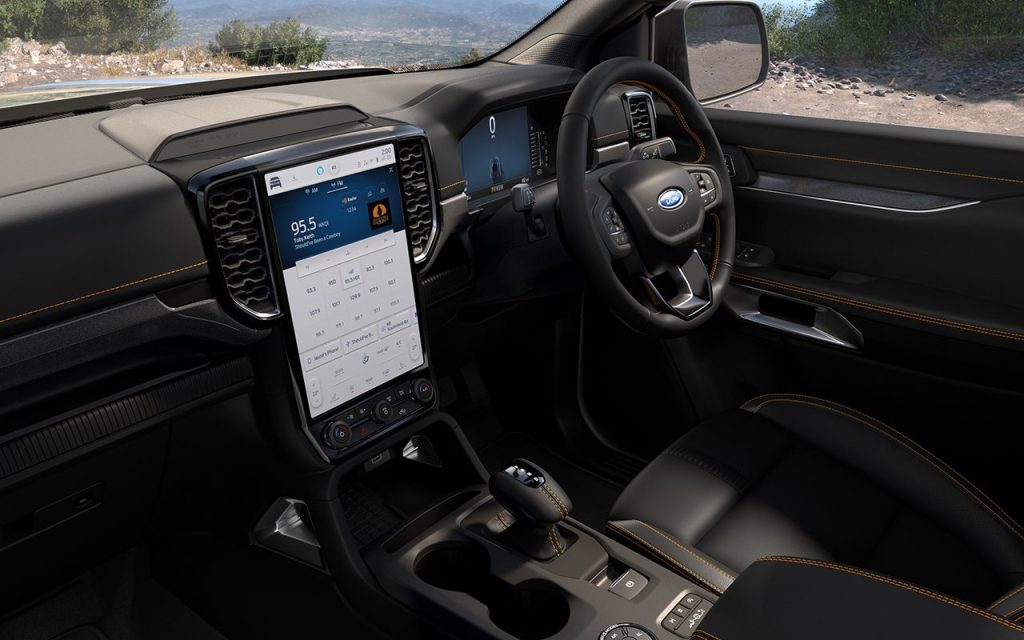
Ford has been shy to mention whether the Ranger rides on a new platform or not. The answer is that it sits on a modified version of the trusty T6 architecture, sporting a 50mm wider track and front wheels that have been shifted 50mm forwards to allow for 50mm of added wheelbase and, subsequently, more room inside for passengers.
Speaking of the inside, there’s a lot going on. While the outgoing Ranger was always one of the more competitive entries in the ute genre in terms of cabin refinement, design, and tech, the new one pushes all of these elements to new extremes.
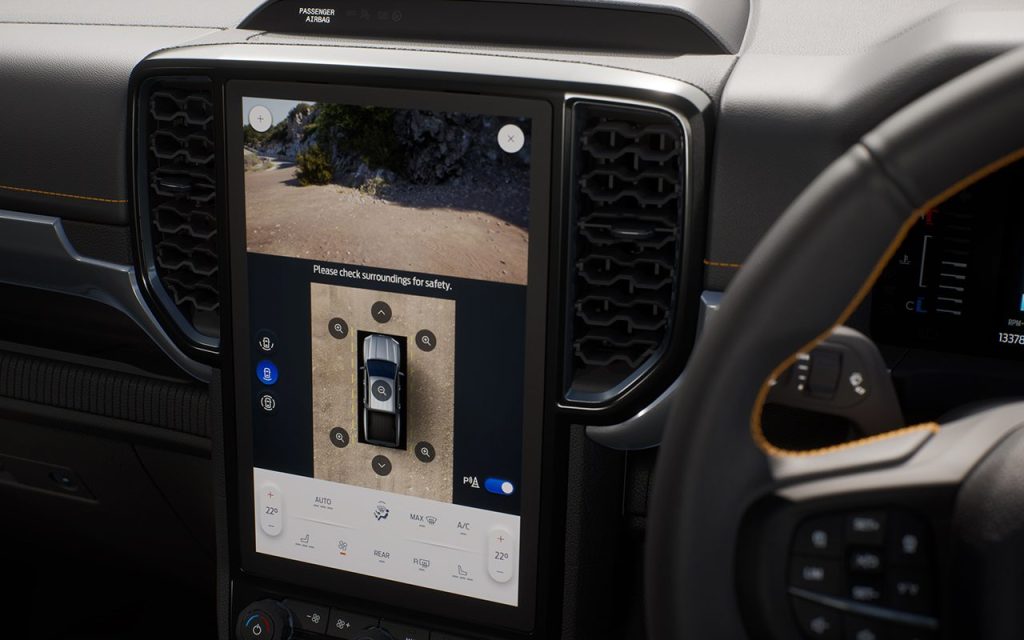
The cabin’s centerpiece is a pair of whopping new tablet-style touchscreens; the Ranger taking a leaf out of the Mustang Mach-E’s book.
The Ranger, at least in the Sport, XLT, and Wildtrak trims, will come with either a 10.1-inch or 12-inch primary touchscreen with the brand’s latest Sync 4 interface. Along with integrating with the FordPass app, Sync 4 also enables over-the-air software updates. These screens are complemented by an available full-size digital cluster, a first for the model, and toys like a 360-degree camera with split-views.
The dashboard design itself is what Ford calls its ‘coast-to-coast’ design. The blue oval claims to have placed emphasis on two areas; material quality and customer feedback. It says that more soft-touch materials feature in the new Ranger compared to the last one, describing the cabin as “plush”.
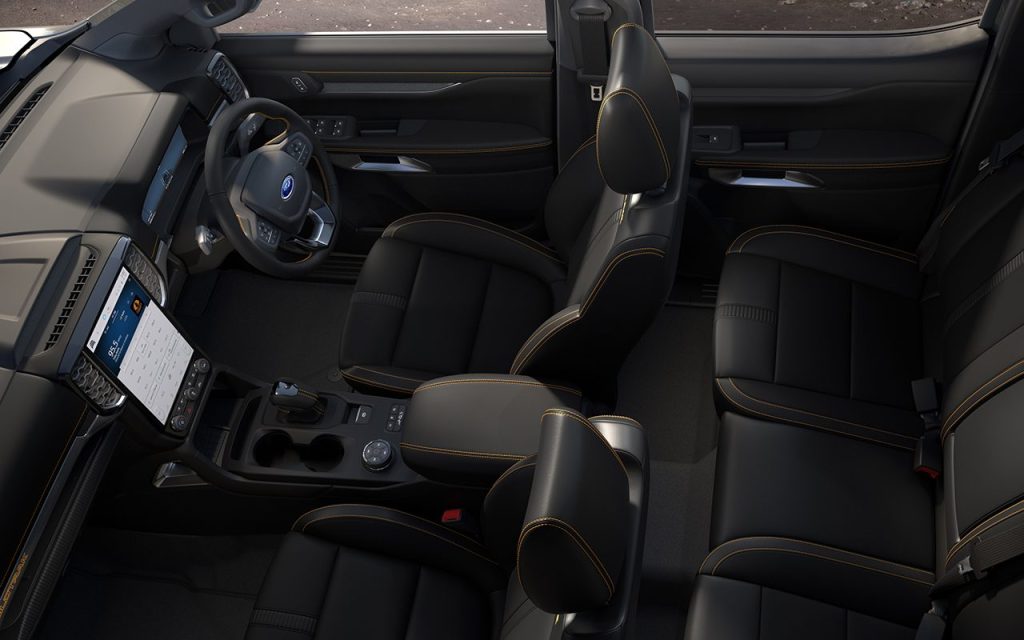
On the customer feedback front, meanwhile, Ford says it’s conducted 5000 interviews with customers around the world, resulting in 1800 pages of field notes. It sounds a bit like marketing guff, but Ford’s keen to note that a large portion of its decisions in the new Ranger link to things it’s learned from customers.
And the cabin is one of the areas where customer feedback seemingly had the most influence. Customers reportedly preferred the tablet layout since it allows for a split-screen interface. Customer feedback is also why the Ranger doesn’t come with a rotary shift dial like the Focus. After initially considering the move, Ford switched to using a ‘short-throw’ e-shifter. Expect to see these featuring on more products in the future.
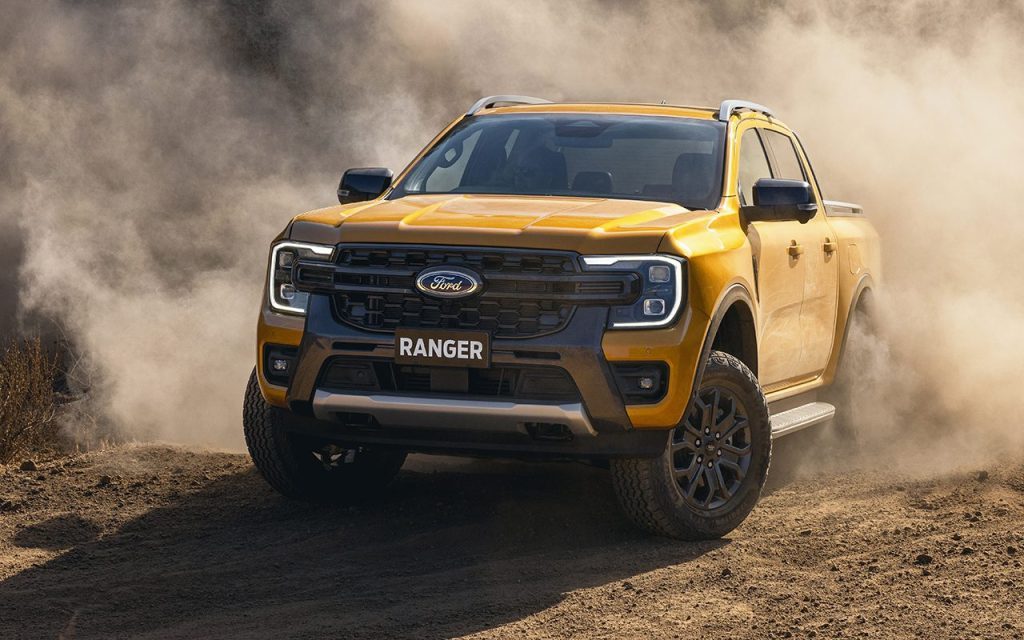
There’s a caveat hanging over all of these tech elements in that Ford New Zealand has yet to confirm any of its local spec.
The current Ford Ranger is arguably the best ute in the biz right now (it got the nod in our comparison test against the all-new Isuzu D-Max and updated Toyota Hilux last year), and it’s also the country’s best selling vehicle outright. By the looks of things, it’s going to be tough for anyone to wrestle either title from the blue oval’s grasp when the new one lands.


